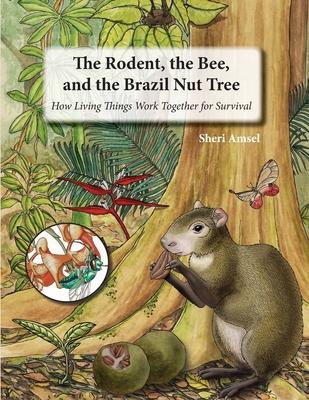When living things work together, it can have spectacular results. We see this cooperation in the Amazon Rainforest between a shiny bee, a little rodent, a beautiful orchid, and a mighty Brazil nut tree. Because of their connection, tons of delicious Brazil nuts are enjoyed by people around the world. Yet, if just one of these living things disappears, Brazil nuts will not grow. Learn about this amazing relationship between animals and plants and what makes this special ecosystem thrive. Why is this book important? Prom their earliest science lessons, kids learn about what living things need to survive. They learn about how plants use sunlight to make their own food and animals eat those plants. They learn about how plants depend on animals to pollinate them and spread their seeds. They may even learn that the things that people do to live comfortably can affect the world around them. But what kids don't always learn is how the lives of plants and animals, including humans, are so interdependent that when something happens to one of them, the others may not thrive or even survive. In a world with a human population close to 8 billion and shrinking wild habitats, this knowledge seems more vital than ever before. In the Rodent, the Bee, and the Brazil Nut Tree, kids will learn about a relationship between a mighty tree, a beautiful orchid, a bee, and a small rodent that is so interdependent, that the loss of just one of them may spell disaster for the rest. This beautiful story of biological harmony is not an isolated example. In wild habitats everywhere, these partnerships exist and form a delicate balance which allows whole ecosystems to thrive all over the Earth. Who is this book for and how can educators use it? This book is recommended for K-8 students as it offers lessons that can be used to fulfill several science standards at every level, including: ESS3.C Human Impacts on Earth Systems for Kindergarten. LSI.A Structure and Function for grades 1, 4. LS2.A Interdependent Relationships in Ecosystems for grades 2, 5, 6-8. LS4.D Biodiversity and Humans for grade 3. LSI.B Growth and Development of Organisms for grades 6-8. Educators can access the curriculum guides for using this book in their science lesson plans at each grade level. For younger students, download the accompanying activity bundle as well.










